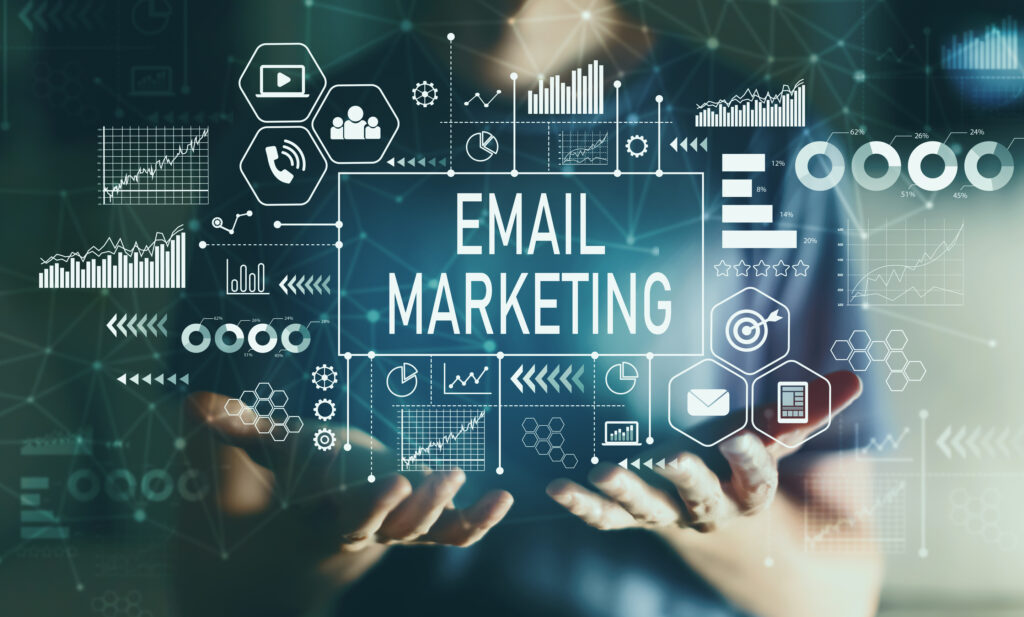
By: Tracey L. Kelley
Aspects of target marketing are quite fluid right now and are projected to be for some time. As the world continues a slow but seemingly progressive recovery from COVID-19, and as the United States, in particular, addresses other key issues affecting its citizens, how you approach a purposeful social media presence for your brand has a significant impact on your turnaround.
In an article for Scientific American, tech expert David Pogue said, “No longer are you on top of the mountain, blasting your marketing message down to the masses through your megaphone. All of a sudden, the masses are conversing with one another.” These are the conversations and actions you need to engage in on your social platforms to reposition your wines, tasting room, community engagement and other advances of your business.
Community and Locality Matter Now More than Ever
You may have experienced extra support from existing and new customers during the pandemic. This momentum, said Meaghan Webster, is essential to maintain through online channels. “People are sourcing inspiration from social media for how to support local businesses and their employees. There’s been a huge push from consumers to support local restaurants and beverage producers they know are struggling, and wineries should acknowledge this sentiment on social media, emphasizing the local nature of their products.”
Webster is the founder of Meaghan W. Marketing and current marketing manager for First Batch Hospitality, the group behind urban winemaking and events at Brooklyn Winery in New York, District Winery in Washington, D.C., and RiNo Point Winery in Denver. She told The Grapevine Magazine that how you use social media to enhance alliances in the community—both with your charitable partnerships and to celebrate the efforts of employees and customers—matters now. So steep your posts with gratitude. “For example, if a winery is donating a percentage of its sales to recovery for their laid-off employees or a special industry fund, then social posts referencing these efforts should thank followers and customers for contributing to the stated cause,” she said. “People love when you show them the impact that their purchase has made. Therefore, follow up and post about how much ended up being contributed to the cause.”
Chad Richards is vice president of Firebelly, a “social media marketing agency on a mission since 2007” based in Indianapolis. Firebelly has worked with JUSTIN Winery and Landmark Vineyards, as well as breweries and restaurants. Richards also recommended taking a less self-serving approach. “Whatever you do, make sure the hero is the charity or community you’re supporting. Nothing elicits eye rolls faster than ‘Look at us—we’re so charitable!’”
If you shredded your social media plan already, don’t worry. There’s still strong potential for authentic communication. “Humans like stories, and we’re storytellers by nature. It’s how we connect to one another, and right now, people are seeking connection more than ever,” Richards said. “And don’t worry about trying to be creative or clever—just be honest.”
We all appreciate uplifting stories right now, according to the media team at Happy Medium, a full-service digital creative agency in Des Moines, Iowa. Keeping this intent in mind helps you craft social media content that showcases community involvement as a result of the energy of your brand and, by close relation, all your customers.
“Overall, audiences tend to react well to community involvement because it’s inspirational and aspirational. If your team is volunteering, share a photo of employees at the volunteer event. If you made a charitable donation, ask the recipient to share digital assets that align with the cause you’re helping them support,” the Happy Medium media team said. “This demonstrates how your brand builds and supports communities in a way that’s relatable and impactful. Write a brief caption about why the cause you’re supporting is relevant to the brand. Always tag the organization!”
Creating Evocative Content
The critical nuts and bolts of pandemic communication are still necessary. On your website and across all social media channels, points about safety, sanitary practices, operational hours and tasting room traffic allowances, among others, must be continuously updated and with proper sensitivity. But, Webster added, you can also use this time to create a haven of comfort.
“Offering a bit of escape from reality is received very well, according to social media analytics for the wineries I work for,” she said. “People are longing for normal times of the past, which means they enjoy seeing photos of what wineries were like before everything shut down. All businesses should be especially cognizant of the tone they use, and always acknowledge the current state of the world in their captions in some way. But providing the nostalgia and temporary escape that followers are looking for right now is a good way to keep people engaged.”
Webster suggested showing the human side of the business through Instagram stories and static posts to “connect people of the business with people who want to support the business.” What’s going on in the vineyards right now? Who’s putting wine shipments together while the winery is closed? What’s the origin story of the winery and vineyard, how did it evolve pre-COVID and how is it navigating this difficult time?
“While the entire story may be long and not fit into one social media post, a winery should know its full narrative, so when it writes a shorter Instagram caption or creates a few slides of an Instagram story about their business, they can distill the most important parts down into a digestible format, and weave it into posts whenever they can,” Webster said.
Happy Medium advised using interactive content whenever possible, to build confidence and trust. “Customers are more likely to engage with content that entertains, educates and tells an authentic story. Engaging customers with your content makes your brand more memorable and creates a deeper connection,” the media team said. “Try incorporating polls, question and answer stickers, or feature the people who make your brand what it is in Instagram stories or by hosting a live stream. Both of these are growing social trends that bolster higher engagement and should be a staple to any social media strategy.”
Don’t feel you have to do all the heavy lifting of brand awareness and connection alone. Once again, Richards said, think about potential alliances. “Get your bottles into the hands of influencers—allowing people to learn about your product via someone they already trust or admire. And think outside the box. These don’t have to be wine or foodie influencers. A travel, fashion or beauty influencer could easily weave your brand and bottle into their story.”
And if the budget allows, boost your social media ad views. “I realize they may be a luxury in times like these, but ads really are the fastest way to get the right message to the right people in the right places,” he said. “Many brands have cut their ad spends, so the marketplace is less competitive right now. You’ll get more for your money if you’re able to participate.”
As reopening continues, your messaging to various demographics might change slightly. Take time to evaluate your core audiences and cater to how they might be feeling. For example:
• Promote your best practices for safety and cleanliness to reassure and comfort people who want to visit your winery but express concern about contagions.
• Consider how other individuals, including those new to the wine tasting experience, might want to know about both your in-person and virtual interactive opportunities.
• Finally, there are additional people, especially those in younger demographics, who are eager to get out and make new memories. Show them through social media why your establishment is the perfect choice for safe-but-fun gatherings.
Remember the message of online interaction: simply ask your followers what they might be interested in, and listen carefully. Their suggestions might be different than what you’ve tried before, but now is the time to take advantage of fresh ideas.
Social Media Tips for the Next 12-18 Months
“Flexible consistency” is the action plan for your social media efforts now—and the foreseeable future. Maybe your marketing manager is temporarily furloughed. Perhaps your state allowed gradual reopening, but as you approach early harvests, you don’t feel you’ll have time to maintain your online presence like you did last year.
The media team at Happy Medium suggested three areas of focus:
• Post consistently. While so much consumer activity has slowed during this period, it’s especially important for brands to stay top-of-mind with their consumers. Even if operations are currently paused, still send at least a couple of posts per week.
• Stay positive. Audiences have been overloaded with COVID-19 messaging over the past few months and are starting to become jaded to overused marketing verbiage. Send positive messages while still being respectful to the current situation.
• Don’t post content exclusively directed at sales: share photos and stories about your team, industry news or fun facts about your winery and operations.
A 2017 study from the American Express Customer Service Barometer reported that Americans are “more likely to post about good experiences (53%) than poor experiences (35%).” So, in addition to staying realistic and flexible about your content and posting efforts, reaffirming customer service is one of the strongest messages Webster offered.
“For small wineries without dedicated marketing or social media staff, that means digital customer service often gets put on the back burner.” She suggested navigating it this way:
• Respond to comments from followers on your posts—or “like” them at the very least.
• Acknowledge when an excited customer shares a photo of your wine on their Instagram story by at least “liking” it. More preferably, respond to it with thanks, and re-share it to your winery’s story.
• Not only “liking” a photo that a loyal fan tagged your wine in, but also commenting on their post and thanking them for their support.
“This kind of gratitude and engagement is always important for building brand loyalty on social media, but it’s especially crucial during this pandemic when financial difficulty is rampant, and fans are giving your winery free, unprompted promotion,” Webster said.
Also, pay close attention to direct messages and respond promptly, and help customers find links to website pages. “This is an important aspect of social media management that many wineries and small businesses could improve on.”
Finally, be realistic, Richards told The Grapevine Magazine. He provided these tips:
• Be flexible. These are unique times, and we’re not sure what will happen next. That’s okay. Nobody does. Be prepared to update your plan and approach as needed.
• Think short term. Take it month-by-month or maybe even week-by-week. Any really long-term campaign planning will likely be disrupted.
• Show vulnerability. If you’re struggling, say so. It makes you relatable, and people will want to support you and come to your rescue.
“Know that it’s okay to ‘not know,’” said Richards. “Uncertainty is uncomfortable—especially when it comes to business and finances—but we’re all in the same boat right now. A ‘best guess’ is sometimes the best you can do.”
The Media Team at Happy Medium
https://itsahappymedium.com/
Social Media Handles on Instagram/Twitter:
@itsahappymedium
Chad Richards, Vice President, Firebelly
https://www.firebellymarketing.com/
Social Media Handles on Instagram/Twitter:
Chad Richards: @chadrichards
Firebelly Marketing: @wearefirebelly
Meaghan Webster, founder, Meaghan W. Marketing
meaghanwebster.com
Social Media Handle on Instagram:
@meaghanwmarketing
















